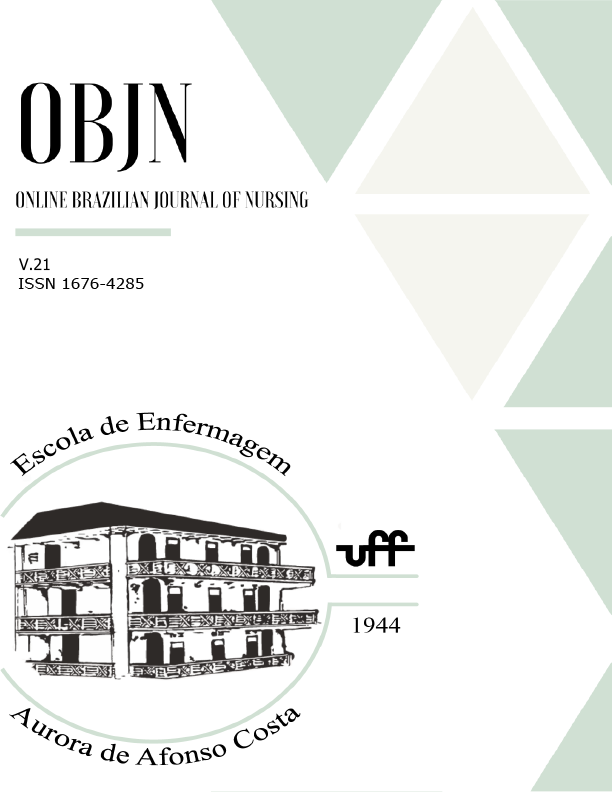Resumo
Objetivo: mapear os instrumentos disponíveis na literatura para avaliação de conhecimentos e atitudes de estudantes de graduação na área da saúde sobre segurança do paciente. Método: revisão de escopo conduzida a partir da metodologia proposta pelo Joanna Briggs Institute, com utilização da extensão do checklist PRISMA-ScR, nas seguintes fontes de informação: Biblioteca Virtual em Saúde, MEDLINE via Pubmed, COCHRANE, CINAHL, Scopus, Embase, Web of Science e Google Scholar. Serão considerados elegíveis estudos que respondam à pergunta de pesquisa, publicados em inglês, português e espanhol e que apresentem a descrição do instrumento utilizado. A seleção ocorrerá de maneira independente por dois revisores, a partir do software Rayyan. Divergências serão apreciadas por um terceiro revisor. Síntese e extração dos dados serão executadas considerando os itens de um formulário elaborado pelos autores. Os resultados serão apresentados por meio de quadro resumo, fluxograma e discussão narrativa. Registro da revisão no Open Science Framework: https://osf.io/wak7f
Referências
World Health Organization (WHO). Global Patient Safety Action Plan 2021-2030: towards zero patient harm in health care [Internet]. Geneva: WHO; 2020 [cited 2021 Apr 04]. 96 p. Available from: https://www.who.int/teams/integrated-health-services/patient-safety/policy/global-patient-safety-action-plan
World Health Organization (WHO). Medication Without Harm - Global Patient Safety Challenge on Medication Safety [Internet]. Geneva: WHO; 2017 [cited 2021 Apr 04]. 16 p. Available from: https://www.who.int/patientsafety/medication-safety/medication-without-harm-brochure/en/
Organização Mundial de Saúde (OMS). Guia Curricular de Segurança do Paciente da Organização Mundial da Saúde: edição multiprofissional. Marra VN, Sette ML, coordinators. Rio de Janeiro: Autografia; 2016 [cited 2021 Apr 04]. 270 p. Available from: https://apps.who.int/iris/bitstream/handle/10665/44641/9788555268502-por.pdf;sequence=32
Ministério da Saúde (BR). Portaria nº 529, de 01 de abril de 2013. Institui o Programa Nacional de Segurança do Paciente (PNSP). Diário Oficial da União [Internet]. 2013 [cited 2021 Apr 04];62(Seção 1):43-44. Available from: https://bvsms.saude.gov.br/bvs/saudelegis/gm/2013/prt0529_01_04_2013.html
Naser AY, Alsairafi ZK, Awaisu A, Alwafi H, Awwad O, Dahmash EZ et al. Attitudes of pharmacy students towards patient safety: a cross-sectional study from six developing countries. BMJ Open [Internet] 2020 Dec [cited 2021 Jun 23];10(12):e039459. Available from: https://pubmed.ncbi.nlm.nih.gov/33323431/. doi: https://doi.org/10.1136/bmjopen-2020-039459
Wegner W, Silva SC da, Kantorski KJC, Predebon CM, Sanches MO, Pedro ENR. Education for culture of patient safety: Implications to professional training. Esc Anna Nery [Internet]. 2016 [cited 2021 Apr 16];20(3):e20160068. Available from: https://www.scielo.br/j/ean/a/DjhJ6pBJ6JYjtKZZ6LHjByz/?lang=pt. doi: http://dx.doi.org/10.5935/1414-8145.20160068
Guedes J, Rossi E. Ensino Sobre Segurança Do Paciente Nos Cursos Da Área Da Saúde. Educere Educ [Internet]. 2020 [cited 2021 Apr 16];15(36). Available from: https://e-revista.unioeste.br/index.php/educereeteducare/article/view/24391/16378%20doi. doi: https://doi.org/10.17648/educare.v15i36.24391
Bohomol E, Freitas MA de O, Cunha ICKO. Patient safety teaching in undergraduate health programs: reflections on knowledge and practice. Interface (Botucatu) [Internet]. 2016 Sep [cited 2021 Apr 17];20(58):727–41. Available from: https://www.scielo.br/j/icse/a/6xf34JfwJqhQTvwvbQvqdRv/?lang=pt. doi: https://doi.org/10.1590/1807-57622015.0699
Cauduro GMR, Magnago TSBS, Andolhe R, Lanes TC, Ongaro JD. Patient safety in the understanding of health care students. Rev Gaúcha Enferm [Internet]. 2017 [cited 2021 Apr 15];38(2):e64818. Available from: https://www.scielo.br/j/rgenf/a/Ztm3jVnYsH63rmkQYrHDnCh/?lang=pt. doi: https://doi.org/10.1590/1983-1447.2017.02.64818
Ambiel RAM, Carvalho LF. Validade e precisão de instrumentos de avaliação psicológica. In: Lins MRC, Borsa JC, organizators. Avaliação Psicológica: aspectos teóricos e práticos. Petrópolis (RJ): Vozes; 2017. p. 115-136.
Ginsburg LR, Dhingra-Kumar N, Donaldson LJ. (2017). What stage are low-income and middle-income countries (LMICs) at with patient safety curriculum implementation and what are the barriers to implementation? A two-stage cross-sectional study. BMJ Open [Internet]. 2017 Jun [cited 2021 Jun 23];7(6):e016110. Available from: https://pubmed.ncbi.nlm.nih.gov/28619782/. doi: https://doi.org/10.1136/bmjopen-2017-016110
Peters MDJ, Godfrey C, McInerney P, Munn Z, Tricco AC, Khalil, H. Chapter 11: Scoping Reviews (2020 version). In: Aromataris E, Munn Z, editors. JBI Manual for Evidence Synthesis JBI [Internet]. [place unknown]: JBI; 2020 [cited 2021 Apr 14]. Available from: https://synthesismanual.jbi.global. doi: https://doi.org/10.46658/JBIMES-20-01
Tricco AC, Lillie E, Zarin W, O’Brien KK, Colquhoun H, Levac D et al. PRISMA Extension for Scoping Reviews (PRISMA-ScR): Checklist and Explanation. Ann Intern Med [Internet]. 2018 Sep 4 [cited 2021 Apr 15];169(7):467. Available from: https://pubmed.ncbi.nlm.nih.gov/30178033/. doi: https://doi.org/10.7326/m18-0850
Mokkink LB, Prinsen CAC, Patrick DL, Alonso J, Bouter LM, Vet HCW et al. COSMIN methodology for systematic reviews of Patient‐Reported Outcome Measures (PROMs): user manual 2018. Amsterdam: University Medical Center, Department of Epidemiology and Biostatistics; Amsterdam Public Health Research Institute; 2018 [cited 2021 Apr 15]. Available from: https://cosmin.nl/wp-content/uploads/COSMIN-syst-review-for-PROMs-manual_version-1_feb-2018.pdf
Ouzzani M, Hammady H, Fedorowicz Z, Elmagarmid A. Rayyan—a web and mobile app for systematic reviews. Syst Rev [Internet]. 2016 Dec [cited 2021 Apr 14];5(1). Available from: https://pubmed.ncbi.nlm.nih.gov/27919275/. doi: https://doi.org/10.1186/s13643-016-0384-4

Este trabalho está licenciado sob uma licença Creative Commons Attribution 4.0 International License.
Copyright (c) 2022 Array

